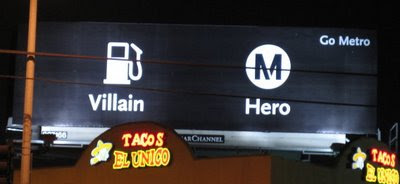About the ideawallah
Gavin Barrett is Owner/Founding Partner + Chief Creative Officer, of award-winning Toronto agency Barrett and Welsh. In pursuit of big ideas he has: nibbled on pigs' ears (not on a live pig at the time); gone elephant-back in the Thai jungle (no elephants were hurt); gambled in a Macau casino (was utterly destroyed). His ads: have run in 35 countries, helped elect prime ministers, attracted the ire of the lawyers for Dolly the clone sheep, drawn an angry crowd in Lagos, have been studied in business texts in Canada and India and received derisive mention in a John Irving novel. His poems: can be found in Penguin’s anthology of 14 contemporary Indian poets, Reasons for Belonging. He cannot: sing.
Tags
A fistful of rupees
A tip of the turban
Acela
advertising
agency search
APTA
Asian Indian
Australia
Awards and Acknowledgements
banking
Barrett and Welsh
Billboard
Blogger On The Move
Brampton
branding
brief
BRT
bus
bus rapid transit
bus side
campaign
Canada
Canadian
Chinese
Chinese New Year
community
creative
Cricket
desi
diversity
Dublin
economical
Egypt
Eid
ethnic
Festival
financial services
France
George Lois
Germany
Glossary
Google
grocery stores
GTA
guerilla
How not to
in the press
Indian
Indian English
Indo-Canadian
Indonesia
innovative media
Islam
LA
LAMetro
language
leadership
logo
London
long copy
Los Angeles
marketing
Memory Lane
Metro subway Spain Spanish Madrid
Montréal
MTA
multicultural
Mumbai
Muslim
New York
Old School
Oslo Norway Monthly passes bus
Ottawa
Outdoor
parody
politics
rant
Rao Barrett and Welsh
research
Respect
retail marketing
Safety
Screening Room
Secrets
simplified script
SNCF
South Asian
spoof
spot
statistics
strategy
streetcar
student campaign
subway
TD Canada Trust
TED
telecom
Toronto
traditional script
Train
Transit branding
transportation
trip planning
TSA
TTC
Tube
TV Spot
TVC
UK
understanding and misunderstanding
urban planning
USA
Vancouver
video
Visa
Viva
Winter
YRT
Züm


































